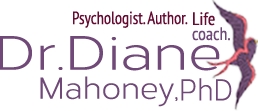As I walked my dogs past Spring Lake recently, I encountered a wheel chair bound fellow basking in the sun, fishing. I greeted him with a question, “Catch anything?” He responded with a big smile and said “No,” without any regret, and then he laughed while he added, “It’s a good thing my wife went to the store.” We began to chat and he informed me that he used to be a coal miner and that is where his accident occurred. He told me he was 53, but the fact that he was paraplegic didn’t seem to disturb him at all, at least it certainly did not interfere with his ability to enjoy life. I silently felt sorry for him, that he was unable to walk around the lake like me, that he missed out on so much that I can do that he cannot. But I slowly began to realize that he may have a secret that I and others could learn from. He clearly knew how to be thankful! He was focused on what he could do, and he was definitely enjoying it! So how does a person make this transition from despair to contentment? I was just wondering……..
During this season of Thanksgiving, this man offers us a wonderful lesson. As I write this blog, I think of several people I know right now who are suffering deeply. One lost a son to a tragic accident over a year ago and another lost a sister to suicide a few months ago. These are both horrendous tragedies that even with the best efforts take time for healing. But the most effective way to heal is always to focus away from oneself, by helping others and by being thankful for WHAT IS.
It is so easy for us to obsess about everything that is wrong with our lives. I have been guilty of that at times myself! No one’s life is perfect! Just remember that! But we all have some perfection in our lives, and while we are bemoaning our sorry lot in life, all the good stuff is just waltzing on by, and we are not even seeing it. Just think of the happy movie going on right around us while we are lost in negative thoughts. Perhaps we look at but don’t see the beauty of the sunset. Maybe we miss the flower that bloomed. Perhaps we don’t see the love offered to us because we are so enveloped in our sorrow. Imagine that we miss the possibilities and opportunities that might make us feel better because we just can’t see beyond the sad movies we continue to view in our heads!
My favorite teaching from the Rhonda Byrne book The Secret is, “What you think about, you bring about.” Just consider this for a moment. Really take some time to think about how this has actually transpired in your life! If you keep yourself into negative and unhappy thoughts, that is just where you stay. If you begin to monitor your thoughts and change them to positive ones, then you suddenly begin to notice those beautiful and wonderful people, things, events that have always surrounded you but you simply overlooked! Life is not about one event, one circumstance, one person.
Thanksgiving is our yearly lesson in thankfulness. But this time I encourage you to make it a daily practice, so that you can enjoy Thanksgiving every day of your life and thereby reap the benefits of being daily nourished by the Thanksgiving message. Every time you catch yourself being sorry, sad, depressed, discouraged, dissatisfied, angry, irritated, think immediately of something wonderful in your life. It is there! I promise! And you probably won’t have to look too far.
An exercise I often use to help people be thankful is to write down 20 things you like to do. The list is a starting point to help you get focused on what makes you happy and thankful. My list included even small things like drinking a hot cup of tea on a rainy day, watching my dogs play and roll around on the floor, feeling the breeze blow my hair while riding my bike or while walking the beach, or just spending time with good friends. Sometimes the simplest things are the most meaningful. Next, start doing them!
Helping someone else is another powerful way to overcome your own despair. This will quickly focus you away from yourself and help to create concern and thankfulness. But the best trick of all is to go to the nearest mirror, and instead of asking like the wicked witch, “Who is most beautiful?” just smile at the image before you and your troubles will magically begin to melt away as your own reflection connects to you empathically and knowingly and with forgiveness as you realize how you hurt you own soul. Celebrate your life this Thanksgiving by being grateful for it by making the very best use of it every day. Remember those who are gone by making them present in how you choose to lead your life and show your thanks to the living by being a gracious and inspiring light.
Can you make a promise to be thankful for yourself? Can you promise to make the most of your life like the fisherman in the wheelchair, and make it a joyful encounter? Will you treat yourself with love, caring, compassion by focusing on what it good and what you have to be thankful for rather than using your thought energy on things that can’t be changed or that you can’t have? I was just wondering…..


